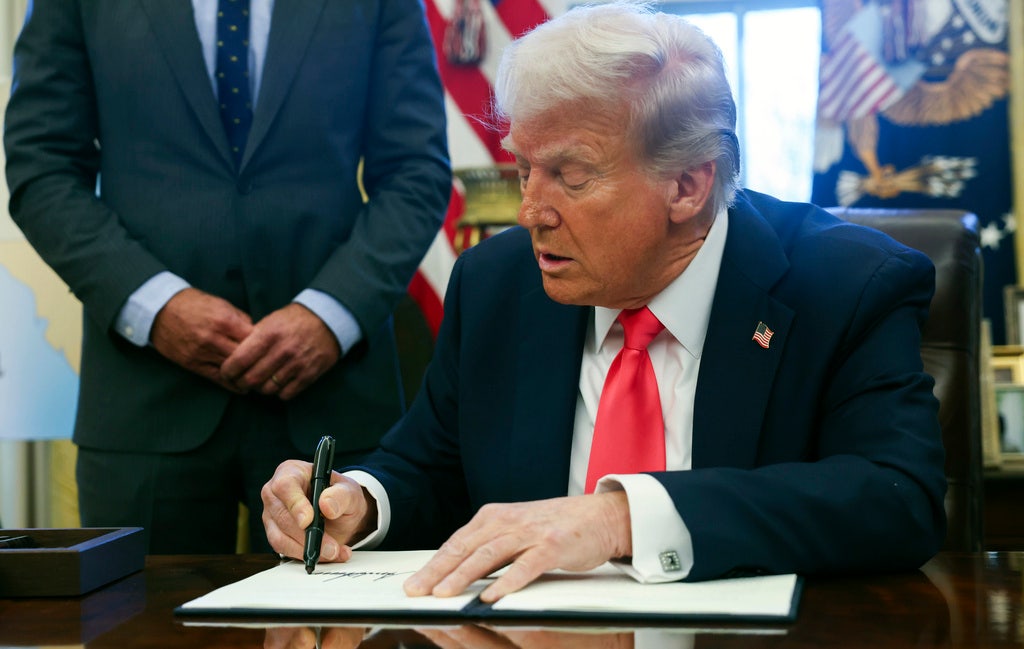On Tuesday, President Donald Trump signed a significant executive order aimed at enhancing transparency in healthcare pricing. This initiative mandates the departments of Treasury, Labor, and Health and Human Services to enforce existing regulations on healthcare price transparency, a measure that has reportedly faced delays under the Biden administration. By requiring hospitals and insurers to disclose actual prices, the order seeks to empower consumers and employers, potentially leading to significant savings in healthcare costs.
| Article Subheadings |
|---|
| 1) Purpose of the Executive Order |
| 2) Implications for Patients and Employers |
| 3) Historical Context of Price Transparency Regulations |
| 4) Anticipated Economic Impact |
| 5) Challenges and Criticism of the Order |
Purpose of the Executive Order
The primary objective of the executive order is to enhance healthcare price transparency across the United States. Officials stated that hidden healthcare prices have allowed large corporate entities, like hospitals and insurance companies, to benefit disproportionately, often at the expense of American patients. The order specifically instructs the relevant departments to expedite the implementation and enforcement of price transparency rules initially mandated during Trump’s previous administration. By mandating realistic pricing disclosures, the administration believes that it can level the playing field for consumers and promote more informed choices when it comes to healthcare services.
Implications for Patients and Employers
As part of this new directive, hospitals and insurers will be required to disclose actual treatment costs and pricing information, rather than merely providing estimates. This move is expected to empower patients by allowing them to compare prices between different service providers, potentially leading to better healthcare choices. Furthermore, employers are projected to benefit by reducing their healthcare expenditures significantly. The executive order states that employers could see an average decrease of 27% on about 500 common medical services, enabling them to shop around for more cost-effective options while ensuring high-quality care.
Historical Context of Price Transparency Regulations
The issue of price transparency is not new. In his first term, President Trump took significant strides towards mandating hospitals and insurance providers to make their prices public. These efforts included regulatory measures aimed at making healthcare more navigable and affordable for ordinary Americans. However, the momentum appears to have slowed down under the current administration, prompting the recent executive order aimed at reigniting those efforts. The White House has indicated that a lawsuit filed against the Biden administration in 2023 over the lack of enforcement of prescription drug transparency requirements underscores the need for renewed actions in this space.
Anticipated Economic Impact
One of the key highlights of the move towards price transparency is the potential economic impact it could have on consumers and the healthcare industry at large. Previous analyses suggested that if the price transparency regulations were fully implemented as originally intended, they could result in consumer savings of approximately $80 billion by the year 2025. Such substantial savings could alleviate some of the financial burdens often associated with healthcare services in the U.S., thereby making essential medical supplies and treatments more accessible to a larger population.
Challenges and Criticism of the Order
Despite the potential benefits outlined in the executive order, challenges remain ahead. Critics have voiced concerns regarding the feasibility of implementation, as many hospitals and insurers might struggle to adapt to sudden changes in pricing disclosure requirements. Furthermore, skepticism exists around whether mere transparency will fully address the deeper issues plaguing the healthcare system, such as the underlying costs of services and treatment accessibility. Additionally, there are apprehensions that rather than reducing prices, transparency could lead to price hikes as insurers and providers adjust to the new requirements.
| No. | Key Points |
|---|---|
| 1 | President Trump signed an executive order to enhance healthcare price transparency. |
| 2 | The order requires hospitals and insurers to disclose actual treatment prices instead of estimates. |
| 3 | Employers could see an average 27% reduction in healthcare costs for common services. |
| 4 | The initiative is anticipated to generate savings of $80 billion for consumers and insurers by 2025. |
| 5 | Critics have raised concerns regarding the potential challenges of implementing these changes. |
Summary
In conclusion, President Trump’s executive order aims to significantly alter the landscape of healthcare pricing in the United States by introducing greater transparency measures. With the potential for substantial cost savings and improved access to healthcare information, this initiative promises to empower patients and employers alike. However, it must carefully navigate the challenges and opposition that may arise during the implementation phase to truly effect change in the healthcare system.
Frequently Asked Questions
Question: What specific measures does the executive order call for?
The executive order mandates that hospitals and insurers disclose actual prices for healthcare services, enhancing consumers’ ability to compare costs and ultimately make informed decisions about their healthcare needs.
Question: How much savings is expected as a result of this order?
Economic analyses suggest that if fully implemented, the price transparency rules could deliver up to $80 billion in savings to consumers and insurers by 2025.
Question: What challenges might the order face during implementation?
Critics have expressed concerns that many healthcare providers may struggle to adapt to the new pricing disclosure requirements, and there are debates about whether transparency alone will sufficiently reduce healthcare costs.


